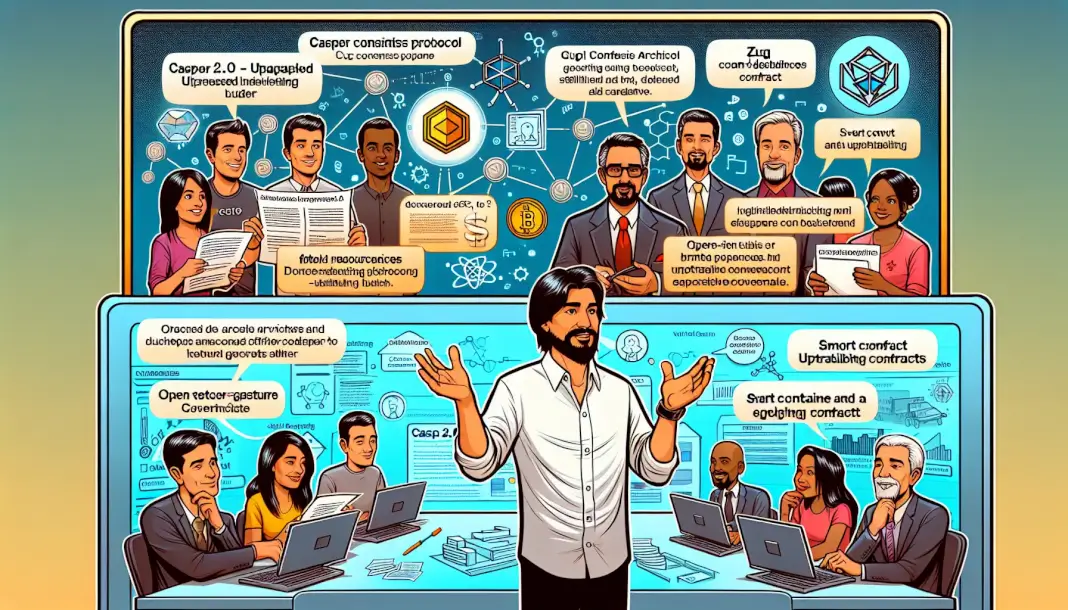KEY TAKEAWAYS
- Casper Network launches Casper 2.0, enhancing blockchain applicability with features like the Zug consensus protocol for deterministic finality.
- The upgrade introduces built-in access controls and smart contract upgradability, supporting diverse application needs with a multi-VM architecture.
- Casper Association implements an on-chain governance model, allowing CSPR holders to participate in legally enforceable decision-making processes.
- Future developments include Casper 2.1, focusing on real-world asset tokenization and compliance, with new projects and incentives for developers.
Casper Network has officially launched Casper 2.0 on its mainnet, marking a significant upgrade aimed at enhancing blockchain’s applicability in real-world scenarios. The announcement was made during an Ask Me Anything (AMA) session hosted by Bybit, where Michael Steuer, CTO of the Casper Association, detailed the new features and future plans for the network.
Casper 2.0 introduces several key innovations, including the Zug consensus protocol, which provides deterministic finality. This feature ensures that once a block is added to the chain, it is immediately finalized, eliminating the need for multiple confirmations. This is particularly beneficial for transactions requiring high certainty, such as financial and legal agreements.
Additional enhancements include built-in access controls, allowing developers to define roles and permissions directly within smart contracts. The upgrade also supports smart contract upgradability, enabling contracts to evolve without the need for redeployment. Furthermore, Casper 2.0’s multi-VM architecture allows different virtual machines to operate side by side on the same network, facilitating diverse application needs.
Governance and Community Involvement
The Casper Association, a Swiss nonprofit, plays a pivotal role in the network’s governance and decentralization efforts. The association is implementing an on-chain governance model that allows CSPR holders to participate in decision-making processes. This model is legally enforceable in Switzerland, ensuring that on-chain votes have real-world legal effects.
Community involvement is encouraged through staking and validator participation. Users can delegate their CSPR to validators, influencing protocol decisions and network upgrades. The association is also decentralizing its governance structure to include mainnet validators and key ecosystem players in board elections.
Future Developments and Opportunities
Looking ahead, Casper 2.1 is set to introduce a new virtual machine and self-describing contracts, further simplifying smart contract development. The network is also focusing on real-world asset tokenization and compliance, with several new projects expected to launch soon.
Developers and businesses interested in building on Casper can access resources and documentation at docs.casper.network. The Casper Association offers grants and incentives for builders on a case-by-case basis, with plans for hackathons and other initiatives to encourage experimentation with Casper 2.0.
For more details on the Casper 2.0 launch and its implications, the full AMA session can be accessed here.
Explore More News:
Disclaimer: The views expressed in this article are those of the authors and do not necessarily reflect the official policy of CoinsHolder. Content, including that generated with the help of AI, is for informational purposes only and is not intended as legal, financial, or professional advice. Readers should do their research before taking any actions related to the company and carry full responsibility for their decisions.

